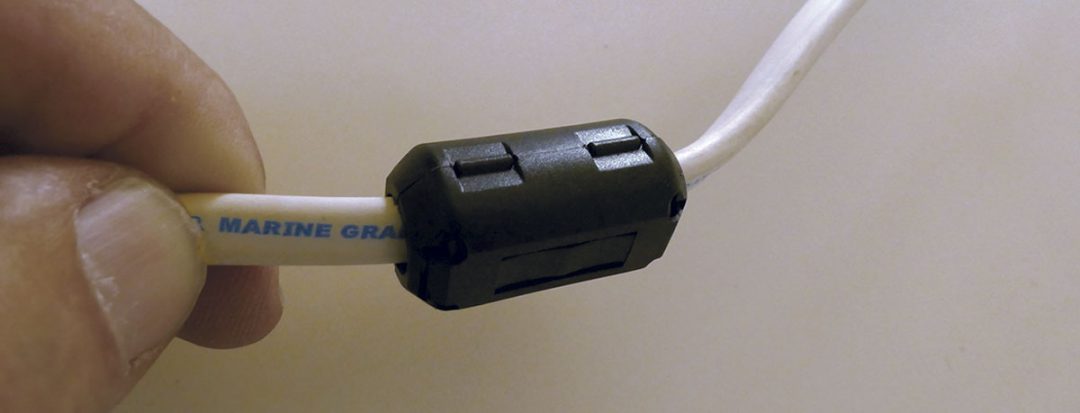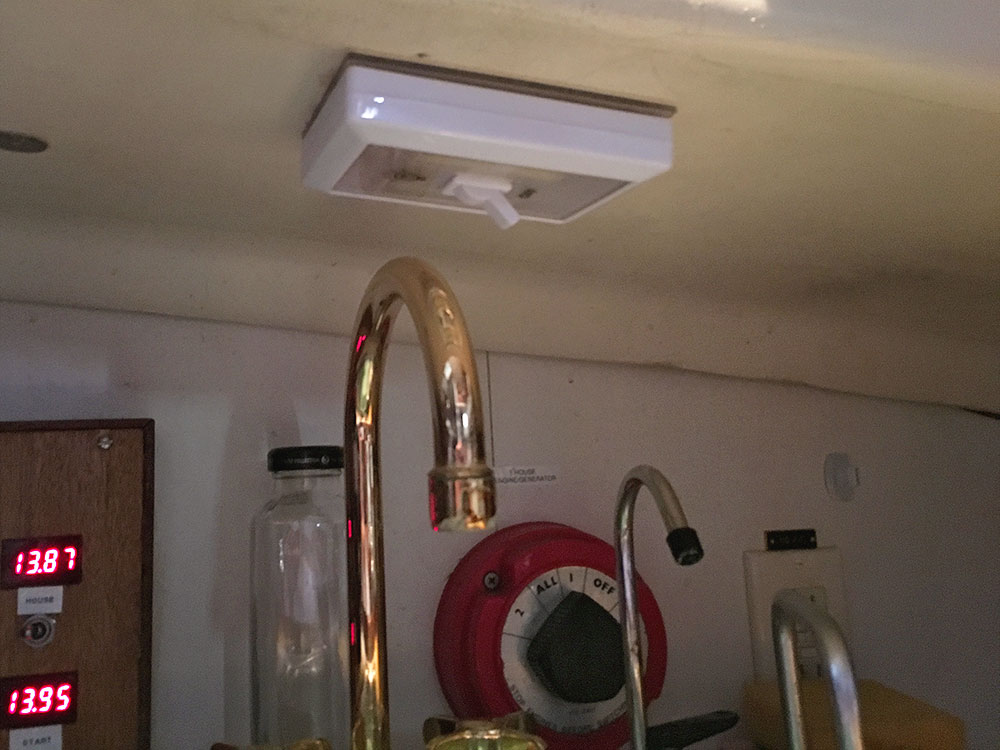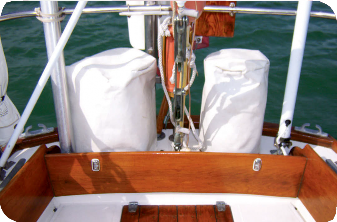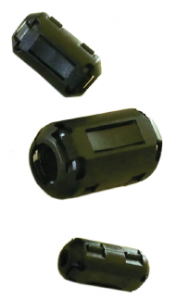 They put a check on electronic noise from RFI and EMI
They put a check on electronic noise from RFI and EMI
Have you ever tried to listen to someone transmitting on their VHF whose voice was almost drowned out by an annoying buzzing noise? Or maybe you can’t pick up your emails via SailMail on your HF radio without turning off the refrigerator. Or worse, your autopilot makes a hard-right turn whenever you push the transmit button on your marine-band radio. These phenomena, which are all symptoms of radio-frequency interference (RFI) and/or electromagnetic interference (EMI), can be eliminated with the use of ferrites, devices made of a ceramic material containing iron oxide that has a high resistance to RFI and EMI and little or no resistance to low-frequency signals and direct current.
You’d think that in a 12-volt DC world, RFI and EMI would be minimal. After all, a DC current passing along a conductor produces very little in the way of electrical noise. When that DC current is switched on and off, however, transients are generated which can produce considerable interference. This is exactly what switching power supplies in laptops, most electronics, and modern solar controllers do — switch the DC current on and off at a high rate of speed to produce a higher or lower voltage. The brushes in electric motors also switch the DC current and are common noise generators.

“Snap-on” ferrites are made in a variety of sizes to fit a wide range of cable diameters, at top. Ferrites are commonly found pre-installed in wires, like this headphone cable, at left, that connect to electronics that might generate or are sensitive to RF and EM interference.
While most electrical devices do a pretty good job of reducing interference, often some of the noise leaks into the wiring connected to the device. As well as conducting the noise to other devices, the wiring acts as an antenna and radiates interference to other nearby electrical circuits. If a radio receiver is nearby, the noise may overwhelm or significantly distort the received signal. If the VHF power source is noisy or the microphone cable picks up radiated interference, the radio will broadcast a hum or buzz. And if the communication bus between two devices — like the cable between an autopilot’s controller and its computer — is noisy enough to garble the signal, some very unexpected results can occur.
Fitting ferrites
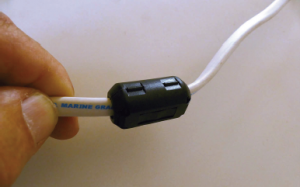
Ferrites might simply enclose the cable.
Ferrites come in a variety of shapes and sizes for different wire sizes, signal levels, and frequencies. For reducing EMI and RFI on our boat, Nine of Cups, I most often used the tube-shaped “snap- on” type of ferrite.
I placed ferrites as close as feasible to the sources of the interference, such as on the power and thermostat cables of the refrigerator and the power cables for any pump or motor that might be causing interference. I also added ferrites to the power cables of electronics, such as the VHF, SSB, and/or marine-band radios, that might be affected by the electrical noise.
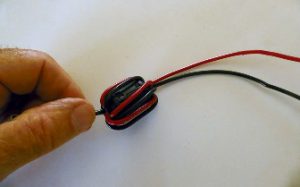
But if the inside diameter of the ferrite is large enough, the cable can be wrapped around the ferrite to increase its effectiveness.
If possible, when adding a ferrite to a wire, I loop the wire around and route it through the ferrite two, three, or even four times. The impedance introduced is proportional to the square of the number of times the wire is looped through the ferrite. Looping the wire through the ferrite twice makes the ferrite four times as effective as it would be with only one wrap. If I can manage four loops, the ferrite will be 16 times more effective. Placing multiple ferrites on a wire is also effective.
Ferrites often reduce problems with interference in communication cables such as a SeaTalk, NMEA, or CAN-type bus as well. Bear in mind, though, that because these cables transmit data, a ferrite can attenuate or distort the data enough to introduce new problems. A trial-and-error approach is best.
Resources
Ferrites are not easy to find, but are available through Amazon, eBay, and specialist outlets like Digi-Key.
Search with “anti interference filter” at amazon.com.
Search with “ferrite filter”at digikey.com.
earch with “ferrite core” at ebay.com.

